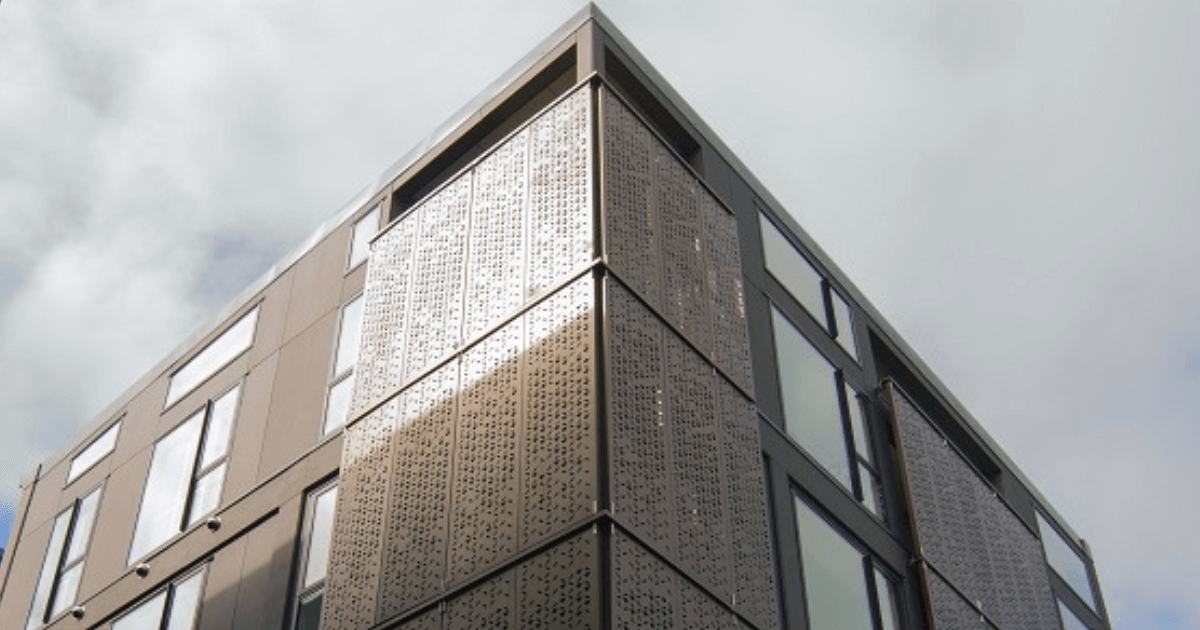What's the best material for outdoor privacy screens?
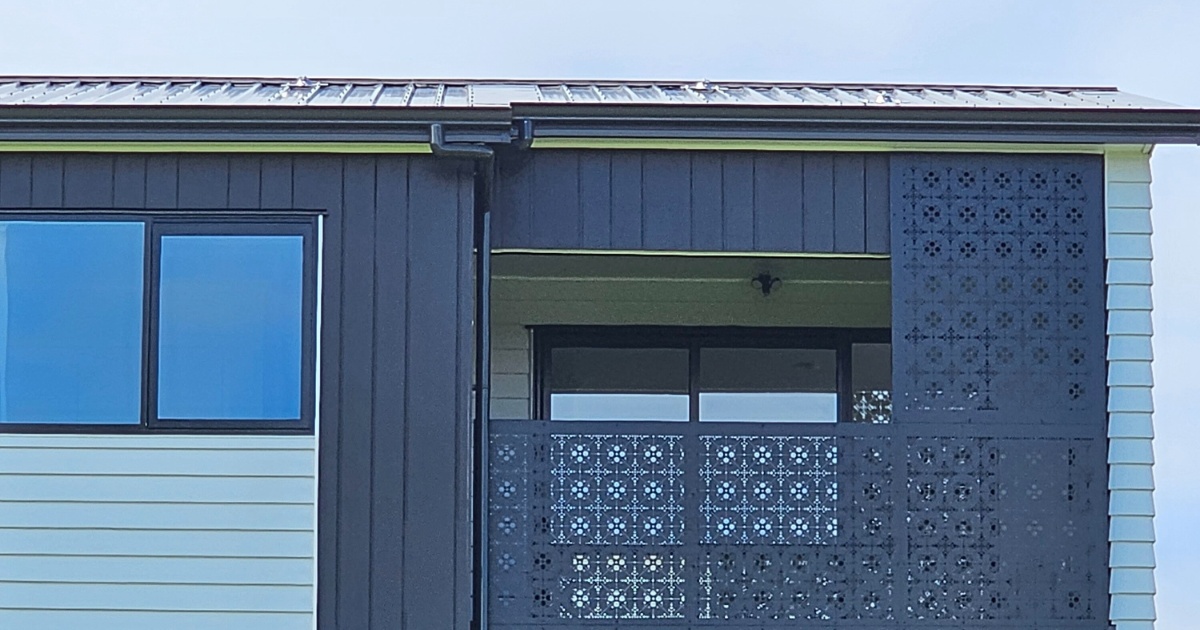
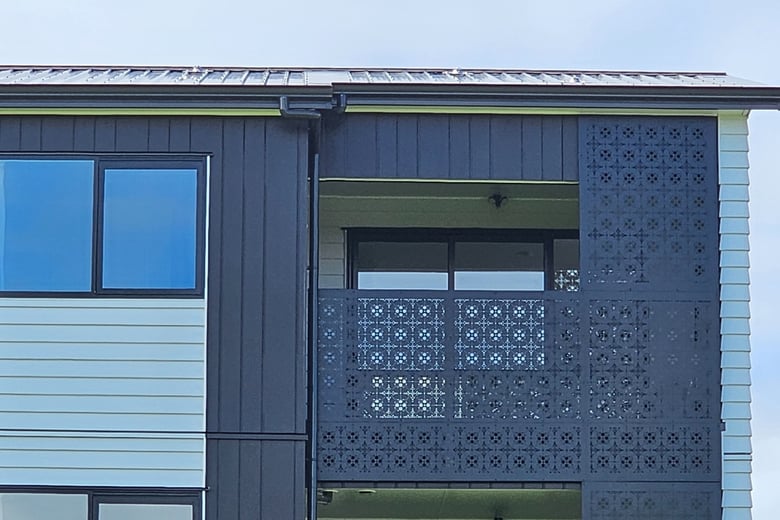
In the realm of architectural design, outdoor privacy screens serve more than one purpose. While their main function is to increase privacy between different spaces, they also have the power to transform the building exterior and landscaping style.
When designing and specifying your housing development or high-end home, the material for your exterior privacy screen will directly impact longevity, aesthetics, weather resistance, and more.
In this article, we cover the most suitable material for privacy screens. Plus, we cover key considerations that should be made when adding perforated screens to a home.
Outdoor privacy screens
Whether highlighting garden elements or concealing utilitarian areas, outdoor screens provide privacy and aesthetic appeal simultaneously. With a diverse array of colours, textures, and styles, they integrate seamlessly into the rest of your exterior design.
In New Zealand exterior architecture, it’s common to find privacy screens produced from timber or PVC. However, if you want to increase aesthetics and provide longevity, aluminium privacy screens should be your first choice.
Aluminium privacy screens
Aluminium is a popular choice for privacy screens because it combines incredible durability, versatility, and aesthetics. This makes them easy to apply in most outdoor applications, with little maintenance required over time. There are various aluminium options available, including fixed aluminium louvres, perforated sheets, and grated screens, many of which can be powder coated to suit your exterior design.
One of the most notable advantages of aluminium panels is that they can be used to screen windows above the ground level. In medium-density and high-density developments, this makes it easier to provide privacy at a higher level without requiring costly maintenance and scaffolding.
Aluminium louvres
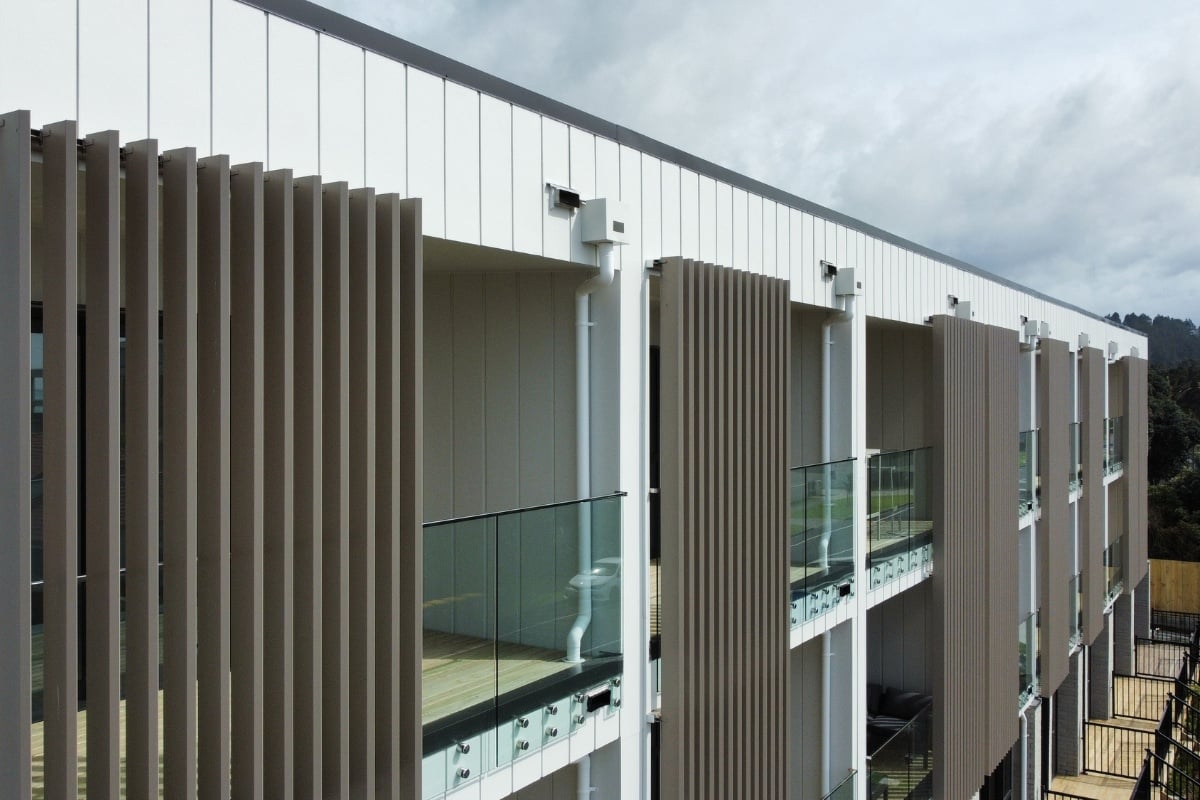
Aluminium louvres consist of thin blades arranged to form a shelter or screen. With fixed aluminium louvres, the slats are fixed in a set position, allowing light and air to flow through. In addition to privacy, louvres are used to improve shade control, ventilation, and architectural design.
If you need more control over shading and ventilation, you can also opt for operable louvres which you can adjust to suit the current weather conditions. These can also be fitted with rain sensors, which will automatically close the blades during rainfall. At Aurae, our louvres are also highly customisable and available in various sizes, colours, and configurations.
Grated screens
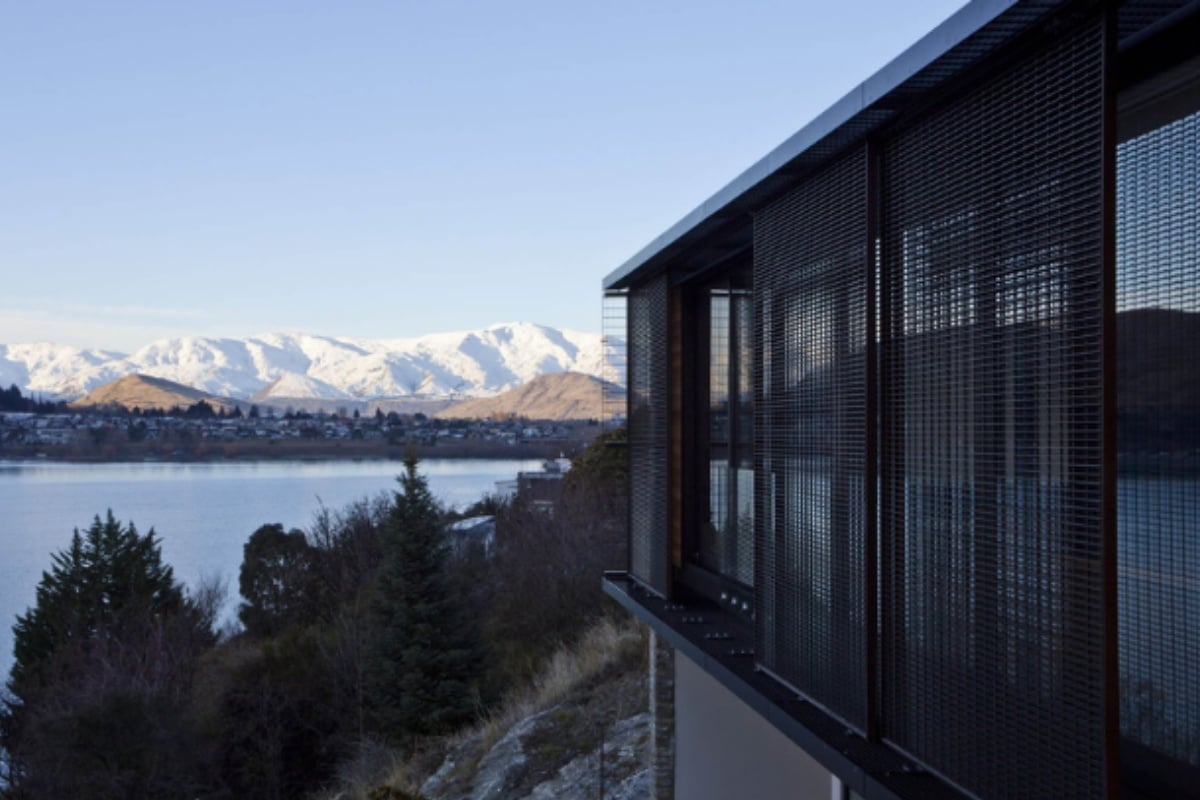
Grated screens provide a modern and stylish solution for privacy while also allowing airflow and light to pass through. The sleek design makes them suitable for contemporary outdoor settings, urban landscapes, and commercial properties. Made of aluminium, grated screens are durable, corrosion-resistant, and low maintenance, making them an excellent long-term investment.
Perforated screens
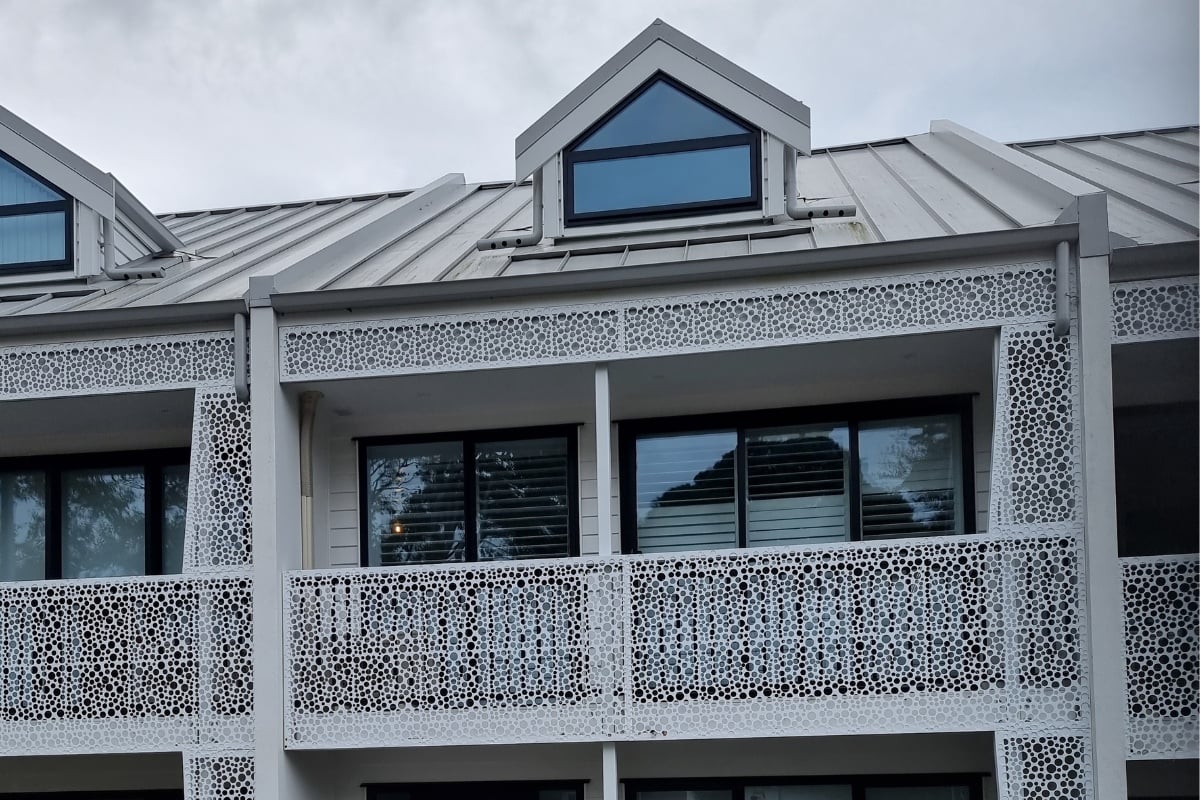
Perforated screens feature laser cut designs in the aluminium, providing privacy while still allowing light to filter through. The sheets are made from high-quality aluminium, ensuring durability and resistance to rust or corrosion, even in coastal areas.
The benefit of perforated sheets is that they double as an aesthetic feature, making your development or building feel cohesive, unique, and intentional. When building multiple homes in one development, these features build a sense of unity, identity, and belonging.
Key considerations for perforated screens
While you can’t go wrong with any of the aluminium options listed above, perforated screens are quickly becoming an architect’s first choice when it comes to privacy options that are both visually striking, and practical. As noted by our sister company Insol, there are some important considerations that should be made if you’re planning to use a perforated panel in your design.
Wind noise
Most people have tried whistling at some point, with varying degrees of success. Some are really good at it and the loudest whistle in the world was recorded at 117.4 dB. A poorly designed perforated pattern can also create unpleasant wind noise, which is especially annoying when nearby a bedroom. It’s also predictable when you have a wind tunnel to test perforated patterns for wind noise, like we do here at Insol [and Aurae].
Part of the reason for establishing the wind tunnel was the growing issues of wind noise on facades. Insol’s research has led to the development of a matrix which quantifies the risk of wind noise issues, classifying the probability of noise and associated level of annoyance. All of Aurae’s dapple range of perforated patterns have been tested in the wind tunnel, and been assigned a risk factor for wind noise.
Ventilation
The larger the open area, the greater the ventilation. It might not be a consideration for most perforated panel facades but it will be if the panels are going next to a street or driveway. Vehicle exhausts spit out carbon dioxide, carbon monoxide and other nasties. Perforated panels with the correct open area are effective at ventilating the area naturally. They also provide a more sustainable alternative than installing and running a mechanical solution.
Acoustics
Perforated screens can reduce sound by blocking sound waves. While perforations will allow sound to travel through them, panels with smaller open areas have increased sound-proofing capabilities. How much sound is reduced will depend on the setting, and how much sound you want to block out or let through. The correct open area can even reduce specific frequencies.
Light
The combination of light and shade adds movement – the dappled light on the interior of a building, as the sun streams through, is nothing short of spectacular. Harnessing the path of the sun, perforated panels will change the entire character of a building interior and can also cast a spell on exterior passers-by. Backlighting can be used for dramatic effect, by adding warmth and setting different moods, depending on the time of day.
Energy efficiency
HVAC typically accounts for around 40% of a building's energy consumption. A further 17% is used in lighting. Perforated panels allow both ventilation and natural sunlight which can help reduce energy costs, and contribute to the energy efficiency of a building.
Weight
In our experience, increasing the open area to reduce the weight of the panels very rarely happens. However, it is a possibility and there might be a small number of projects where the weight of the facade dictates a change to open rates used.
Conclusion
When selecting your outdoor privacy screens, wind noise, light, and aesthetic appeal are all critical. At Aurae, we have considered each of these qualities in our dapple range, developed to provide optimum design appeal, and to suit the harsh New Zealand climate.
The dapple range has been thoughtfully designed to showcase and enhance sunlight. This range of perforated screens is unique as each perforated screen pattern has been rigorously tested using a one to one model in a wind tunnel, for your peace of mind. This ensures you know which screen is most appropriate for your chosen application, and how much wind noise the screens will make.
For more information on our dapple perforated screens, download the brochure. Inside, you’ll find more specifications on the following:
- Dapple screen patterns and textures.
- Product specifications.
- Wind ratings for each design.
- Custom dapple screens.
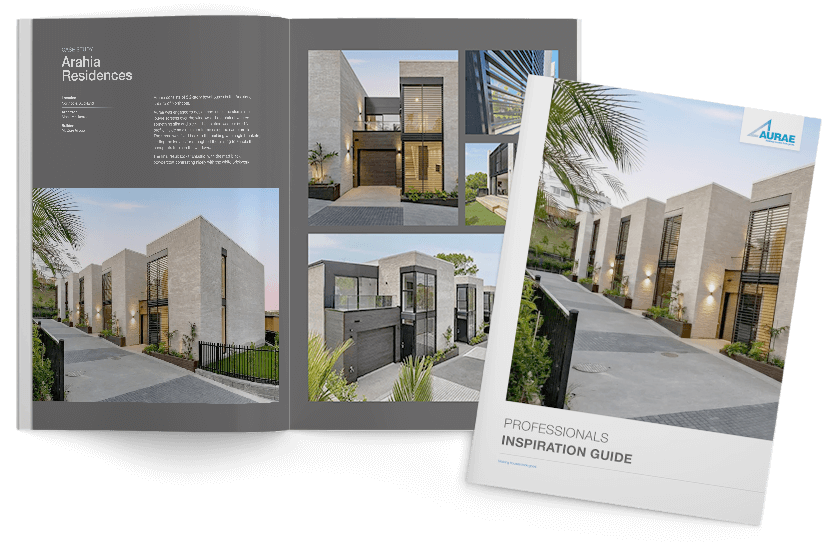
Looking for louvre inspiration for a current or future project? Our inspiration guide is the perfect starting point.
DOWNLOAD HERE


